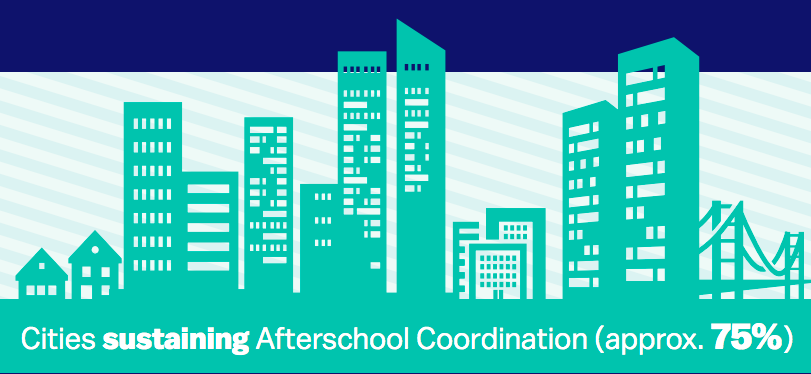 WALLACE FOUNDATION
WALLACE FOUNDATION
Citywide after-school systems have staying power, according to a recent comparison of U.S. city systems in 2013 and 2020.
“More than three-quarters of the cities with after-school coordination in 2013 were still coordinating after-school efforts in 2020,” said Priscilla Little, senior consultant at the Forum for Youth Investment, in an online gathering of after-school system leaders last week.
The use of after-school quality standards and data management systems was significantly more widespread in city systems in 2020; about half the city systems had gained additional funding, according to the comparison commissioned by the Wallace Foundation and published in March.
However, the number of cities with a coordinating entity had dropped, according to the report “Stability and Change in Afterschool Systems, 2013-2020: A Follow-Up Study of Afterschool Coordination in Large Cities.” The report followed up on the status of the 77 city systems identified for the 2013 study.
At that time, many large American cities were coordinating after-school programs, often through a specially created agency but sometimes through a local YMCA or other nonprofit, United Way agency or the mayor’s office, the report showed. School districts were rarely the coordinating entity.
Developing a citywide system to encompass after-school programs is an effort to meet the needs of all young people in a city, particularly marginalized youth who might otherwise not have access to programs. City systems also provide summer learning programs and programming during other school breaks.
Earlier Wallace Foundation research had shown three elements to be very important in a city after-school system: a coordinating entity, quality standards and data management.
By 2020, two-thirds were using a data management system, compared with slightly more than one-third in 2013. By 2020, 83% were using quality standards.
However, one-fourth of the systems no longer had a city coordinating entity. That could be because some systems have been subsumed by larger initiatives, according to the report.
“Statewide and regional networks, state-level after-school coordination initiatives and private philanthropy appear to be playing a larger role in supporting coordination,” Little said.
A change in city leadership and a loss of funding also led to the end of some citywide systems. The average number of after-school providers in each city remained at 65.
More than half the cities continued to be able to access school data, according to the report.





























